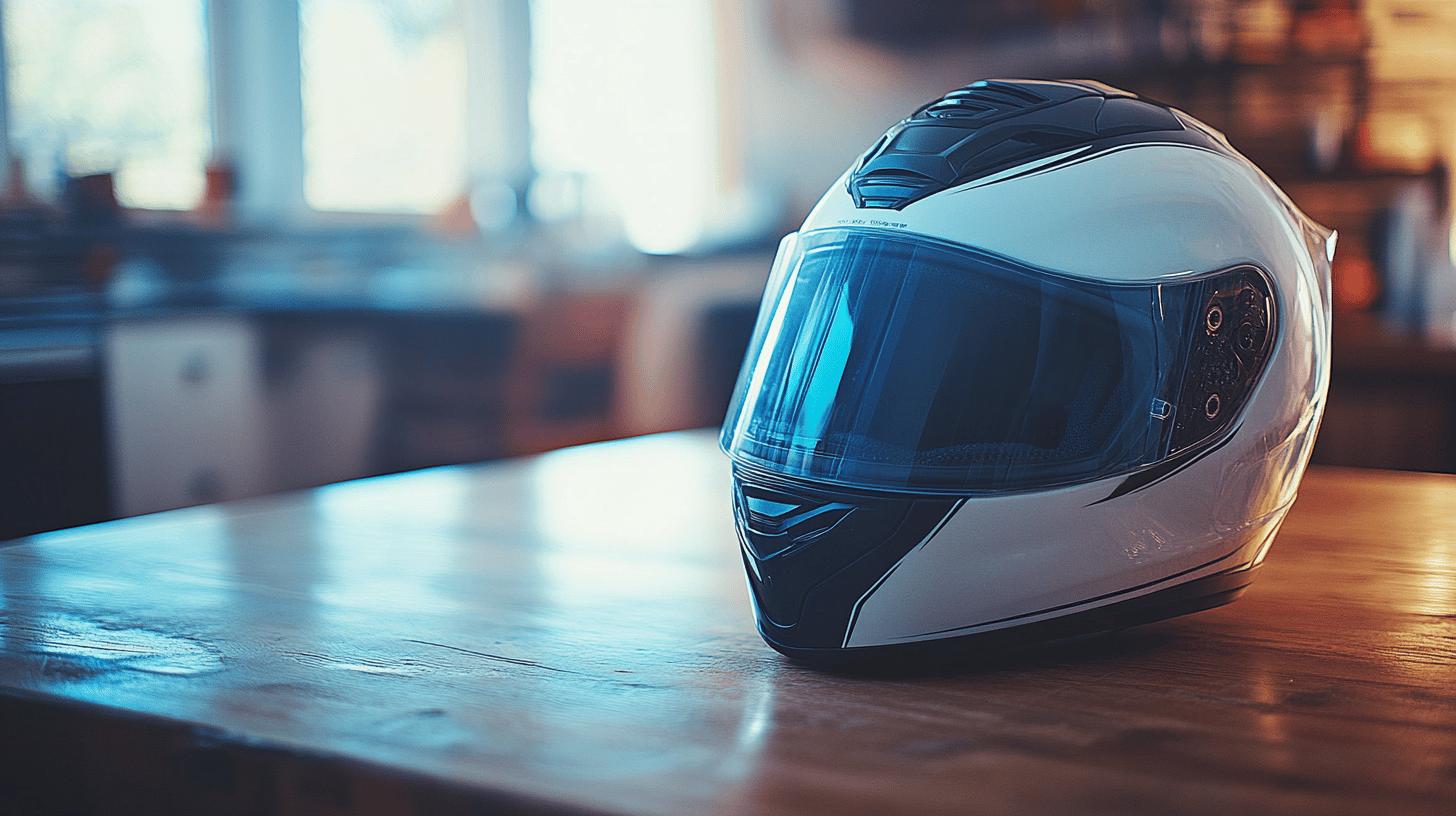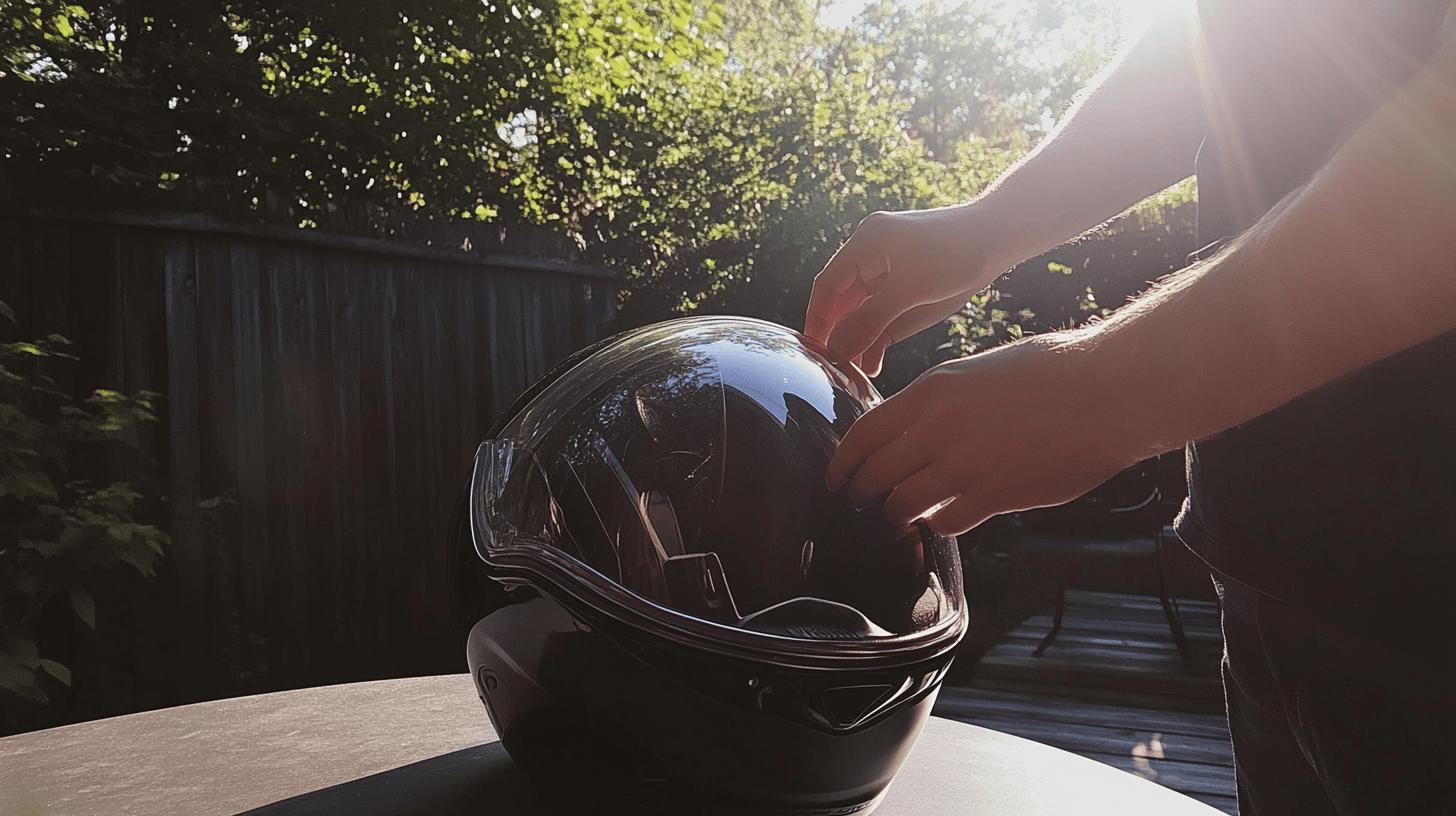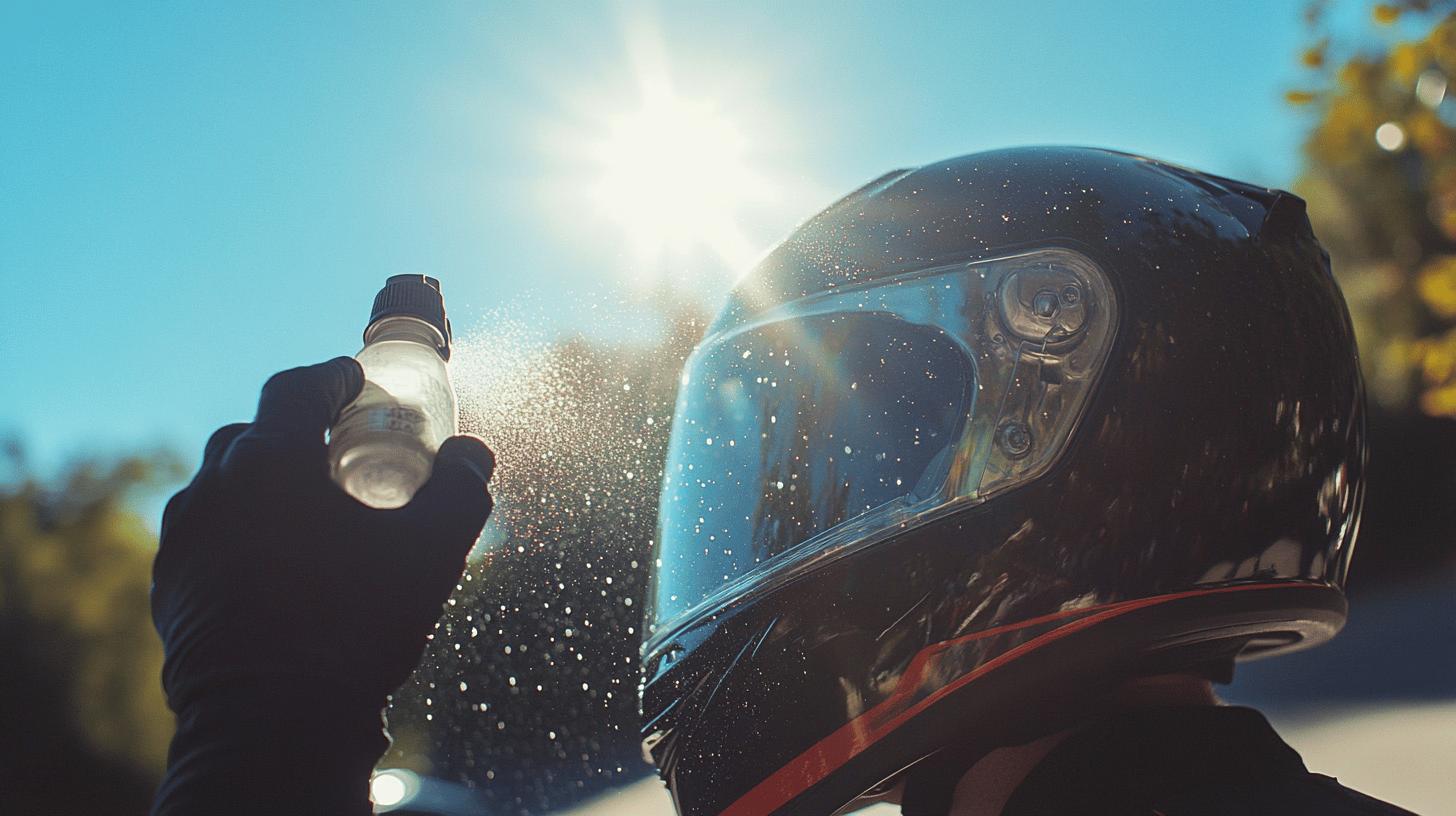Ever find yourself frustrated with cleaning bug splatter off your motorcycle helmet after a long ride? Tackling this common issue effectively can enhance your riding experience and preserve your helmet's condition.
The secret lies in selecting helmets with features designed to minimize bug accumulation, ensuring both functionality and comfort. In this article, Protective Gearz dives deep into the specifics of how to choose the perfect helmet to keep these nuisances at bay.
Whether you're searching for sleek aerodynamic designs or durable finishes, understanding these elements can revolutionize your rides, making them smoother and cleaner.
Choosing the Right Helmet Features for Bug Prevention

Selecting the right helmet is crucial for reducing bug accumulation during rides. The design and features of a helmet can significantly impact its ability to prevent bugs from becoming a distraction or a safety hazard. By choosing a helmet with specific features, riders can enjoy a clearer view and a more comfortable ride.
-
Full-face helmets with visors
-
Aerodynamic design
-
Ventilation systems
-
Anti-bug visors
-
Durable helmet finishes
These features collectively enhance both safety and comfort. Full-face helmets with visors provide a comprehensive barrier against bugs, protecting the rider's face and eyes. An aerodynamic design helps reduce the surface area exposed to bugs, allowing them to flow over the helmet instead of sticking.
Helmets with well-designed ventilation systems facilitate airflow, minimizing the chance of bugs entering while keeping the rider cool. Anti-bug visors are specifically treated to repel insects, reducing the frequency of cleaning required.
Lastly, durable helmet finishes resist bug splatter, maintaining the helmet's appearance and making it easier to clean. These elements work together to ensure a safer and more enjoyable riding experience.
Applying Protective Coatings and Treatments

Protective coatings and treatments are essential for keeping bugs from sticking to motorcycle helmets. These coatings, often in the form of sprays, create a slick surface that prevents insects from adhering, reducing the need for frequent cleaning.
Anti-bug sprays specifically designed for helmets are highly effective in minimizing bug accumulation. They work by forming a barrier that insects find difficult to cling to, thus maintaining the helmet's visibility and aesthetics. Many of these sprays are easy to apply, quick-drying, and do not affect the helmet's finish.
Additionally, some helmet surface treatments include hydrophobic properties, which further enhance resistance to both insects and water, making them an excellent choice for riders frequently exposed to varying weather conditions.
Applying these protective treatments requires a simple process that ensures optimal performance. First, clean the helmet surface thoroughly to remove any existing dirt or bug residue. This step is crucial for allowing the spray to adhere properly.
Next, shake the anti-bug spray can well to ensure the formula is evenly mixed. Then, apply a light, even coat over the helmet, covering all exposed areas. Finally, let it dry completely before riding to ensure the protective layer is fully set.
-
Clean the helmet surface thoroughly.
-
Shake the anti-bug spray can well.
-
Apply a light, even coat over the helmet.
- Let it dry completely before riding.
These steps, when followed correctly, help maintain a cleaner helmet, contributing to a safer and more enjoyable ride by keeping bugs at bay.
DIY Solutions for Bug-Free Riding

DIY solutions for keeping bugs off motorcycle helmets are not only cost-effective but also allow for customization using readily available household ingredients. One popular method involves creating homemade bug repellents using essential oils like lemongrass, eucalyptus, and citronella.
These oils are known for their natural insect-repelling properties and can be mixed with water and a small amount of vinegar to enhance their effectiveness. Other common ingredients include dish soap and lemon juice, which can help to break down bug residue without damaging the helmet's surface.
To apply these DIY solutions, start by thoroughly cleaning the helmet to remove any existing bug splatter. Mix the chosen ingredients in a spray bottle, using approximately 10-15 drops of essential oil in a cup of water with a teaspoon of vinegar.
Shake well before use. Spray the mixture evenly across the helmet, ensuring complete coverage. While these solutions are generally safe for helmet surfaces, it's advisable to test a small area first to check for any adverse reactions. The main benefit of DIY repellents is their affordability and ease of customization.
However, they may require more frequent application compared to commercial products and may not offer the same level of long-lasting protection.
Effective Helmet Cleaning Techniques

Regular cleaning of motorcycle helmets is crucial for maintaining both their appearance and functionality. Bugs, dirt, and debris can accumulate on the helmet and visor, impairing vision and potentially compromising safety. Consistent cleaning not only ensures a clear view but also extends the life of the helmet by preventing buildup that can degrade materials over time.
-
Mild soap
-
Warm water
-
Microfiber cloth
-
Helmet cleaning solution
-
Soft brush
-
Helmet cleaning kit
To effectively clean a helmet and visor, start by removing any removable parts, such as the visor, to allow for thorough access. Use warm water and mild soap to gently wash the helmet's surface, avoiding harsh chemicals that might damage the finish.
A microfiber cloth is ideal for this task, as it effectively removes bug residue without scratching. For stubborn areas, a specialized helmet cleaning solution can provide additional cleaning power. Apply the solution with a soft brush to gently scrub away persistent grime, ensuring not to apply excessive pressure. Once the helmet is clean, rinse it with water and dry it with a clean microfiber cloth to prevent water spots.
For the visor, use the same mild soap and water combination, applying it with a microfiber cloth to avoid scratches. Rinse thoroughly and dry with a separate cloth to maintain clarity. A helmet cleaning kit can streamline this process, offering all necessary tools and solutions in one package, ensuring a comprehensive and efficient clean.
By following these steps, riders can keep their helmets free from bugs and debris, ensuring optimal performance and safety on the road.
Maintenance Tips for a Bug-Free Helmet

A consistent helmet maintenance routine is essential for keeping bugs at bay and ensuring the longevity and effectiveness of your gear. Regular maintenance not only enhances the helmet's appearance but also preserves its protective features. To achieve this, riders should routinely clean their helmets to remove any accumulated bug debris.
This practice prevents the deterioration of materials that can result from prolonged exposure to insect residue. Additionally, inspecting the helmet for any signs of wear or damage after each ride can help identify areas that may be more prone to bug accumulation, allowing for timely intervention.
Practical tips and preventative measures play a crucial role in maintaining a clean helmet. Store the helmet in a clean, dry place when not in use to minimize exposure to bugs and environmental elements. Using a helmet bag or cover can offer additional protection during storage.
Implementing a timely cleaning schedule—such as wiping down the helmet after every ride—helps to prevent bug residue from hardening, making it easier to clean. By adopting these strategies, riders can keep their helmets in top condition, enhancing both safety and comfort on the road.
Comparing Commercial Anti-Bug Products

A plethora of commercial products are available to combat bug accumulation on motorcycle helmets, each designed with specific features to meet diverse rider needs. These include eco-friendly sprays that utilize natural ingredients to deter insects without harming the environment.
Advanced cleaning solutions are formulated to not only remove existing bug residues but also prevent future build-up. Additionally, helmet defogging sprays, which often double as cleaning agents, offer a dual-purpose solution by maintaining clear visors while keeping bug splatter at bay. These products cater to riders looking for both convenience and efficiency in maintaining their gear.
| Product Type | Features | Price Range |
|---|---|---|
| Eco-friendly Spray | Natural ingredients, non-toxic | $10 – $20 |
| Advanced Cleaning Solution | Deep cleaning, long-lasting protection | $15 – $30 |
| Helmet Defogging Spray | Anti-fog, dual cleaning action | $10 – $25 |
| All-in-One Kit | Includes spray, cloth, and applicator | $25 – $40 |
Choosing the right product involves assessing individual preferences and environmental considerations. Riders interested in minimizing their ecological footprint might opt for eco-friendly sprays, which offer effective bug prevention without chemical exposure.
Those seeking robust protection might be drawn to advanced cleaning solutions, which provide long-term resistance against bug splatter. For convenience, helmet defogging sprays deliver an integrated approach to both vision clarity and bug deterrence.
Ultimately, the selection should align with the rider's specific requirements and ethical values, ensuring both effective bug management and a responsible approach to helmet care.
Seasonal Considerations for Helmet Care

Seasonal variations significantly influence helmet maintenance and bug prevention efforts. In warmer months, heightened bug activity necessitates more frequent cleaning and the application of protective treatments to keep helmets free from insect debris.
Riders often encounter increased bug splatter during spring and summer, making it vital to regularly check and clean helmets to maintain visibility and safety. Conversely, colder months may lead to moisture buildup, which can cause mold or mildew if helmets are not properly dried and stored.
To maintain a clean helmet throughout the year, consider implementing a few practical strategies. During high bug activity seasons, increase the frequency of cleaning routines and apply anti-bug sprays or coatings more often.
In off-seasons, ensure helmets are stored in a cool, dry place to prevent mold growth, using a helmet bag or cover to protect against dust and environmental elements. Regular inspections for wear and damage, combined with prompt cleaning after each ride, will help keep helmets in optimal condition, ensuring both safety and durability regardless of the season.
Final Words
Understanding the importance of helmet features, coatings, DIY solutions, and effective cleaning techniques can significantly reduce bug accumulation on helmets.
Practical maintenance tips and a comparison of commercial products further enhance a bug-free riding experience.
Whether using the right helmet with visors and aerodynamic designs or applying effective anti-bug treatments, learning how to keep bugs off a motorcycle helmet ensures a safer, more enjoyable ride. Embrace these strategies for optimal helmet care and enhanced road adventures.
FAQ
How to keep bugs off a motorcycle helmet visor?
To keep bugs off a motorcycle helmet visor, use a visor cleaner or protective spray that repels insects. Regular cleaning ensures clarity and maintains visibility.
Can you use Rainx on a motorcycle visor?
RainX is not recommended for motorcycle visors as it may damage the plastic material, leading to reduced visibility and safety.
Does anti-fog spray work for motorcycle helmets?
Anti-fog spray can effectively reduce fogging inside a helmet visor, improving clarity and visibility in humid or rainy conditions.
How do you make a helmet visor water repellent?
To make a helmet visor water repellent, apply a water-repellent spray designed for plastics, ensuring the visor stays clear and free from water streaks. Follow product instructions for optimal results.
How to clean bugs off a motorcycle helmet?
Cleaning bugs off a motorcycle helmet involves using mild soap, warm water, and a microfiber cloth to gently remove residue without scratching the surface. Regular maintenance prevents build-up and ensures helmet longevity.

Ryan Thompson is a 35-year-old sport bike enthusiast known for his adventurous spirit. With years of weekend rides and exploring new roads, Ryan brings fresh insights and firsthand experience to ProtectiveGearz. His energetic approach and passion for the latest gear make him a trusted source for riders seeking up-to-date advice.



